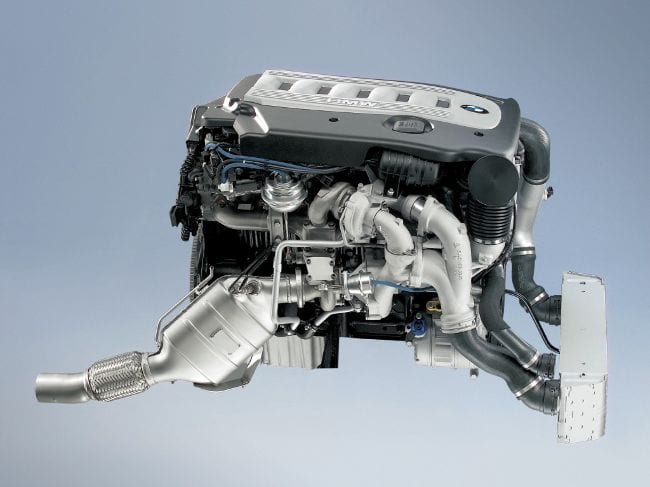
Двигатели DOHC и SOHC: различия, преимущества и недостатки
Содержание
Перед выбором автомобиля, будущий автовладелец сталкивается с массой информации, сравнивая тысячи характеристик. В это число входит и тип двигателя, а также компоновка ГБЦ, о чем далее пойдет речь. Что такое двигатель DOHC и SOHC, в чем их отличие, устройство, преимущества и недостатки — читайте далее.
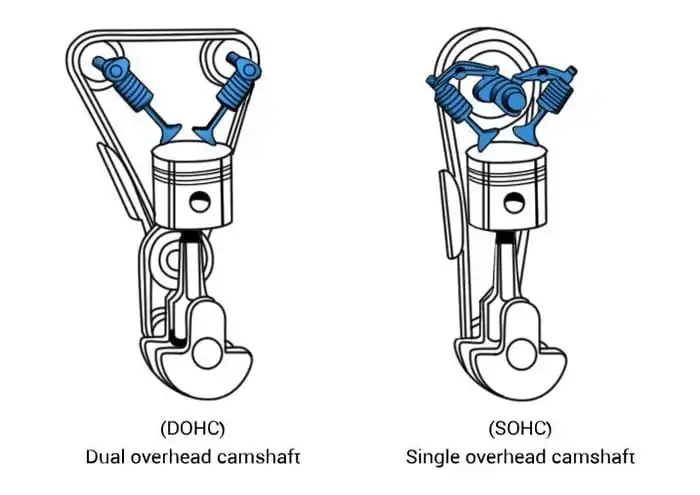
📌Что такое двигатель SOHC
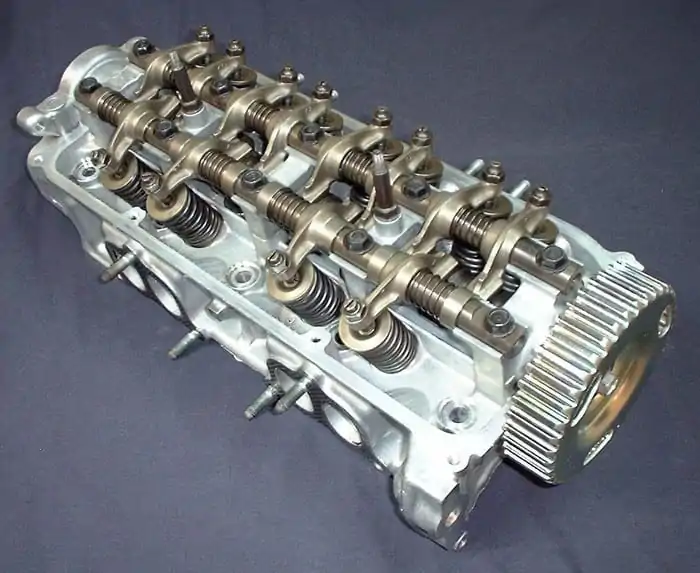
Single Over Head Camshaft (единый верхний распредвал) — такие моторы были на пике популярности в 60-70-е года впрошлого века. Компоновка представляет собой верхнее расположение распредвала (в головке блока цилиндров), а также несколько вариантов расположения клапанов:
- приведение клапанов посредством коромысел, которые установлены на отдельной оси, при этом впускные и выпускные клапана распложены V-образно. Подобная система широко применялась на американских автомобилях, отечественом моторе УЗАМ-412, пользовалась популярностью благодаря отличной продувки цилиндра;
- приведение клапанов в действие с помощью рокеров, на которые действует сила кулачков вращающегося вала, при этом клапана расположены в ряд;
- наличие толкателей (гидрокомпенсаторов или подпятников), которые расположены между клапаном и кулачком распредвала.
На сегодняшний день многие производители автомобилей с 8-клапанным мотором используются компоновку SOHC, как базовую, соответственно дешевую версию.
История создания двигателя SOHC
В 1910-м году компания Maudslay применила особенный на то время тип газораспределительного механизма на моделях 32 НР. Особенность двигателя с таким ГРМ в том, что распредвал в механизме один, и он располагался над цилиндрами в головке блока.
Для привода каждого клапана мог использоваться привод коромыслами, рокерами или толкателями цилиндрической формы. В некоторых моторах, как например, в ДВС Triumph Dolomite Sprint, используются разные приводы клапанов. Впускная группа приводится толкателями, а выпускная – рокерами. И для этого использовался один распределительный вал.
📌Что такое двигатель DOHC
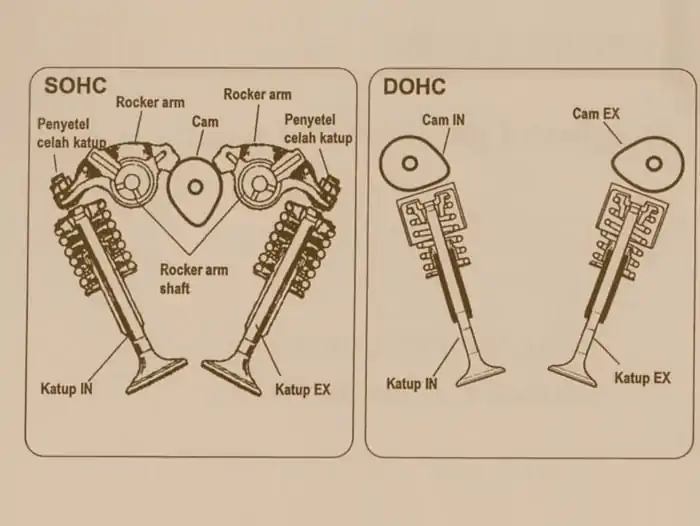
Что такое двигатель DOHC (два верхних распредвала) — является усовершенствованной версией SOHC, благодаря наличию двух распредвалов получилось увеличить количество клапанов на цилиндр (обычно 4 клапана), на данный момент используется два типа компоновки:
- два клапана на цилиндр — расположение клапанов параллельно друг другу, на каждую сторону по одному валу;
- четыре и более клапанов на цилиндр — клапана установлены параллельно, на один вал 4-х цилиндрового мотора может приходиться от 2 до 3 клапанов (двигатель VAG 1.8 20V ADR).
Наиболее широкое распространение получили моторы DOHC благодаря возможности отдельно настроить фазы впуска и выпуска, а также увеличения количества клапанов без перегрузки на кулачки. Теперь турбированные двигатели, исключительно имеют компоновку с двумя и более распредвалами, обеспечивающие более высокий КПД.
История создания двигателя DOHC
Разработкой двигателя с ГРМ типа DOCH занималась четверка инженеров компании Peugeot. Эту команду впоследствии назвали «Бандой четырех». Прежде чем они начали разрабатывать проект этого силового агрегата, эта четверка с успехом выступала в автомобильных гонках. Во время участия их в гонках максимальный предел оборотов ДВС составлял две тысячи в минуту. Но каждый гонщик хочет сделать свой автомобиль самым быстрым.
За основу данной разработки был взят принцип, который высказал Зуккарели. Согласно его идее, распредвал газораспределительного механизма был установлен над клапанной группой. Благодаря этому конструкторам удалось исключить из конструкции силового агрегата ненужные детали. А чтобы повысить эффективность газораспределения, один тяжелый клапан был заменен на два более легкие. Причем для впускных и выпускных клапанов стал использоваться индивидуальный распределительный вал.
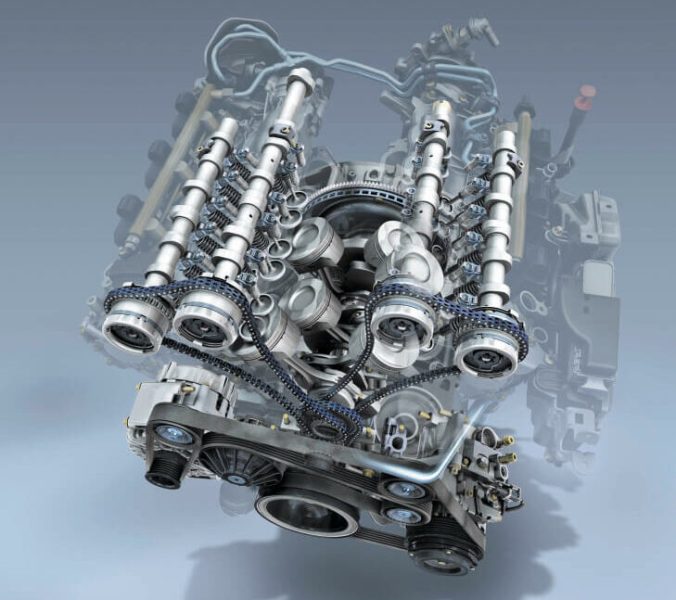
Его компаньон, Анри, провел необходимые расчеты, чтобы внедрить в разработку идею измененной конструкции мотора. Согласно с его расчетами, мощность ДВС можно повысить, если увеличить объем воздушно-топливной смеси, который будет поступать в цилиндры за один цикл силового агрегата. Этого удалось достичь, установив в головку блока цилиндров два клапана с меньшим диаметром. Они намного эффективней справятся с задачей, чем один клапан с большим диаметром.
При этом ВТС будет поступать в цилиндры в уменьшенных и лучше смешанных порциях. Благодаря этому снижается потребление топлива, а его мощность наоборот – повышается. Эта разработка получила признание, и была внедрена в большинство современных силовых агрегатов.
DOHC с двумя клапанами на цилиндр
Сегодня такие компоновки, практически, не используются. В 70-х годах ХХ века двухвальный восьмиклапанный мотор назывался 2OHC, и применялся в спортивных авто, таких как Alfa Romeo, раллийный “Москвич-412” на базе ГБЦ типа SOHC.
DOHC с четырьмя клапанами на цилиндр
Широко распространенная компоновка, которая нашла свое место под капотом тысячи автомобилей. Благодаря двум распредвалам появилась возможность установить 4 клапана на цилиндр, а значит повысить КПД за счет улучшенного наполнения и продувки цилиндра.
📌Чем отличается DOHC от SOHC и от других типов двигателя
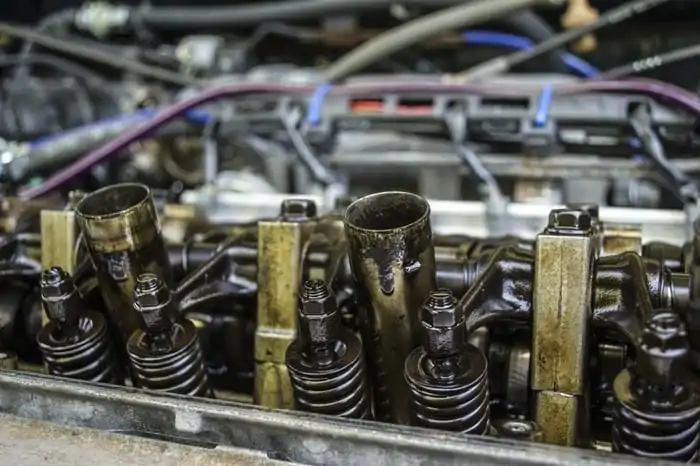
Главное отличие между двумя типа моторов состоит в количестве распредвалов, а также механизм приведения в действие клапанов. В первом и втором случае распредвал всегда находится в головке блока цилиндров, клапана приводятся в движение через коромысла, рокера или гидрокомпенсаторы. Считается, что SOHC с V-образным расположением клапанов, и 16-клапанный DOHC имеют одинаковый потенциал по мощности и крутящему моменту за счет конструктивных особенностей.
📌Преимущества и недостатки DOHC
О достоинствах:
- топливная экономичность;
- высокая мощность относительно других компоновок;
- широкие возможности увеличения мощности;
- меньший шум работы за счет применения гидрокомпенсаторов.
О недостатках:
- больше изнашиваемых деталей — дороже обслуживание и ремонт;
- риск рассинхронизации фаз из-за расслабления цепи или ремня ГРМ;
- чувствительность к качеству и уровню масла.
📌Преимущества и недостатки SOHC
О достоинствах:
- дешевое и простое обслуживание за счет нехитрой конструкции;
- возможность установки турбонаддувами при V-образном расположении клапанов;
- возможность самостоятельного ремонта обслуживания мотора.
О недостатках:
- во многом меньший КПД, относительно DOHC;
- высокий расход относительно 16-клапанного двигателя из-за недостаточной мощности;
- значительное снижение моторесурса при тюнинге;
- необходимость более частого внимания системе ГРМ (регулировка клапанов, осмотр толкателей, замена ремня ГРМ).
В завершение предлагаем небольшое видео о разнице этих двух типов моторов:
Вопросы и ответы:
На каких машинах двигатели DOHC. Моторы с газораспределительным механизмом типа DOHC стали применять на автомобилях, начиная с 1960-х годов. Изначально это была модификация с двумя клапанами на один цилиндр (один на впуск, один на выпуск). Для впускных и выпускных клапанов полагалось по одному распределительному валу. Немного позже появились ГРМ с двумя распредвалами, только на один цилиндр полагается по четыре клапана (два на впуске, два на выпуске). Полный список таких моторов сложно составить, но о данной конфигурации газораспределительного механизма автопроизводитель указывает соответствующей надписью на крышке головки блока цилиндров или в технической документации.
На каких машинах двигатели SOHC. Если машина эконом-класса, то скорее всего, что газораспределительный механизм двигателя такой модели будет иметь один распредвал на все клапаны. Пик популярности таких моторов приходится на конец 60-70-х годов, но и в современном автотранспорте нередко встречаются модификации силовых агрегатов с таким газораспределительным механизмом. О данной разновидности ГРМ свидетельствует соответствующая надпись на крышке ГБЦ.

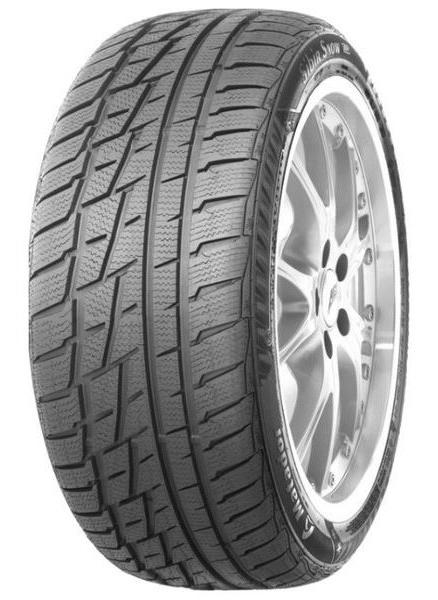
11 комментариев
Frank-Eméric
Bonjour, j’ai lu votre article et merci pour le partage. J’ai une Hyundai Elantra GLS DOHC 16V 2.0 du 01/01/2000 qui, ce matin après avoir pris la route à 90km/h a commencé à claquer à l’arrêt dans un parking, le niveau d’huile est à plus de la moyenne. j’aimerais avoir un conseil
Udin
Bagaiman dengan mesin SOHC 16 katup??
Mistrzu
sohc przecież mają hydrauliczne popychacze i regulację… , rozrząd więcej wytrzyma fizycznie w sohc, tak samo są silniki 16 zaworowe z jednym wałkiem rozrządu, mają mneij mocy, ale silniki z sohc i 8v to najwytrzymalsze silniki, można samemu rozrząd bez blokad zmienić i są tańsze znacznie w naprawach i częściach…
Bogdan
Bună seara, am un Hyundai Coupe Fx ultimul model, motor DOHC 2.0, 143 CP, mașina are doar 69.800 km am cumpărat-o nouă, am înțeles că în America de Sud se nai numesc și motoare Beta 2, aș vrea să știu dacă se pot pune ceva cai în plus în motor, nu că i-ar trebui, dar sunt curios, vă mulțumesc anticipat
Bogdan
Bună seara, am un Hyundai Coupe Fx ultimul model, motor DOHC 2.0, 143 CP, mașina are doar 69.800 km am cumpărat-o nouă, am înțeles că în America de Sud se numesc și motoare Beta 2 ele fiind căutate de tunneri pentru capacitatea lor de a suporta mai mulți cai putere, aș vrea să știu dacă se pot pune ceva cai în plus în motor, nu că i-ar trebui, dar sunt curios, vă mulțumesc anticipat
Bogdan
Motoarele DOHC de un Hyundai Coupe Fx 2.0 litri și 143 CP mai numite și Beta 2 în America de Sud suportă mai mulți cai putere ?
Аноним
No
Аноним
h
الطرقي العجلان
كم يقطع كيلو محرك dohc بدون خلل في الاحوال الطبيعة . هل يصل الى مليون كليو مثل بعض المحركات دون خلل
راشد
شرح ممتاز لمكنة DOHC
ارجو شرح اكثر لسيارة استاراكسDOHC16VALV
Валерій
цікаво скільки виходює двигун 1,4.SOHC на Пежо 206